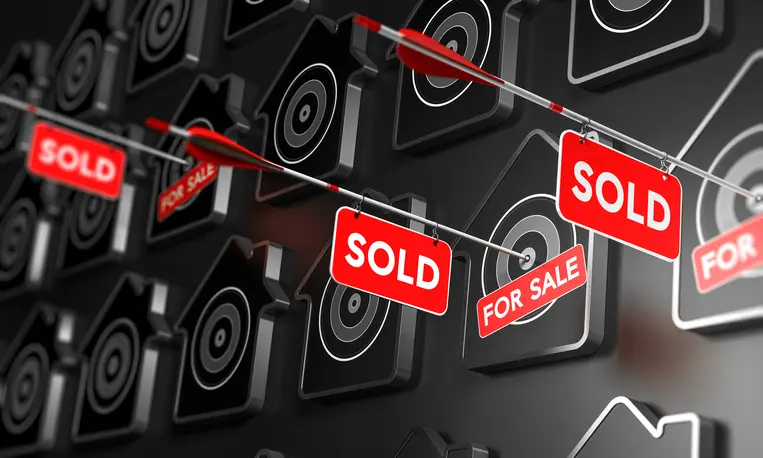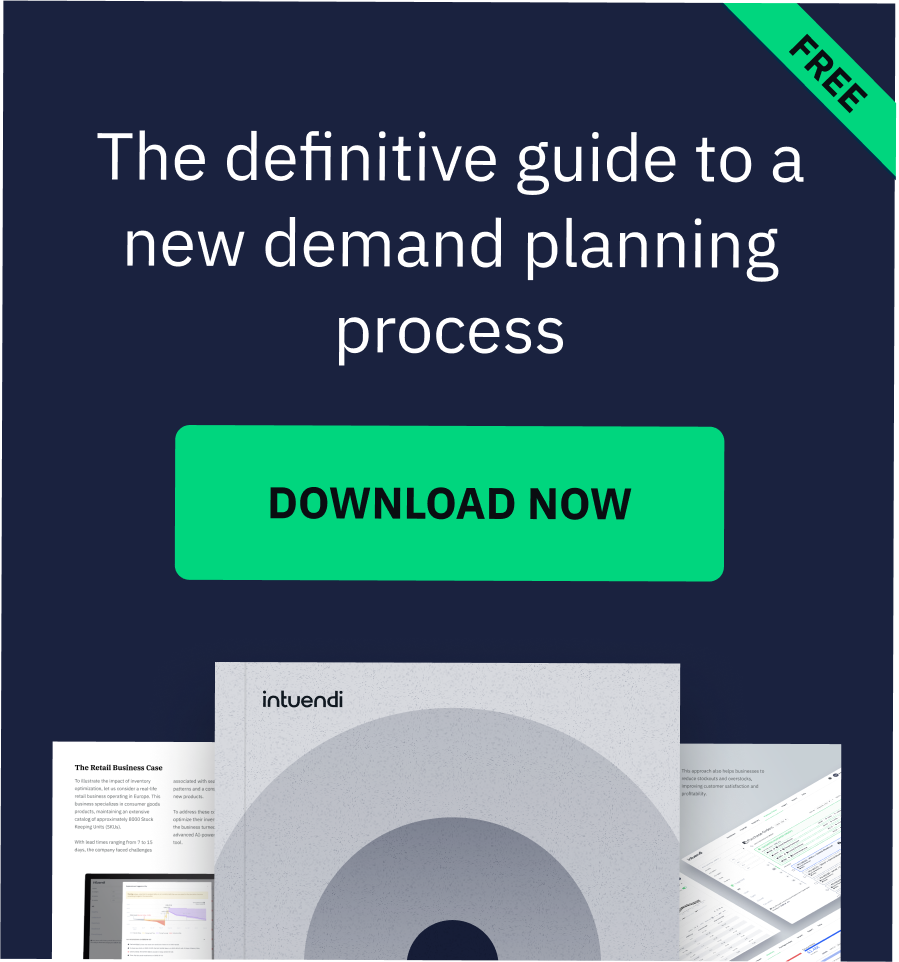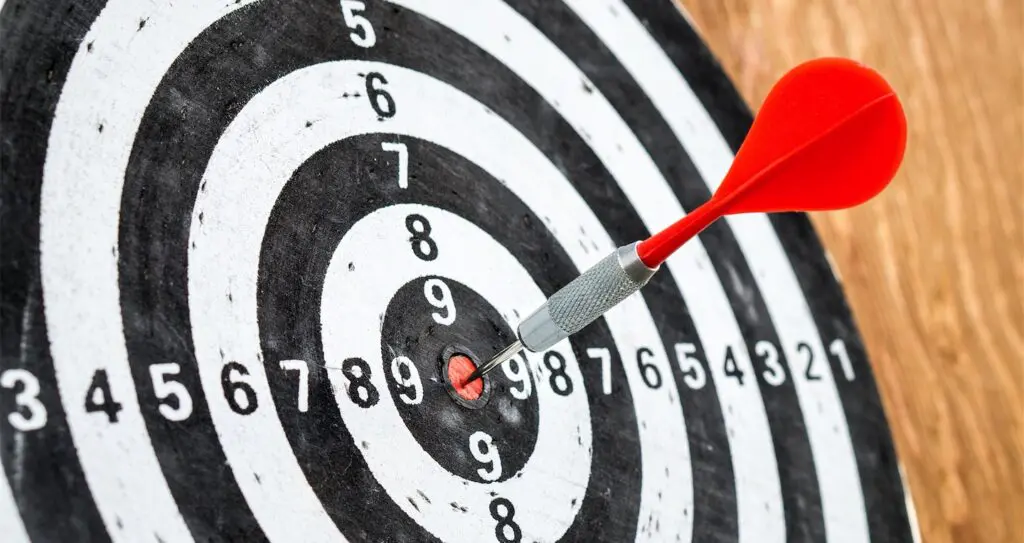This guide explores the concept of sales velocity, a crucial metric for optimising your sales process in a dynamic and demanding business environment. It covers the importance of sales velocity, its components, calculation methods, and strategies for improvement. By the end, you’ll have the knowledge to accelerate your sales pipeline, enhance performance, and drive growth, whether you’re a sales manager or a business owner.
What is Sales Velocity?
Sales velocity measures how quickly a business generates revenue by tracking the speed at which leads move through the sales pipeline and become paying customers. It offers a comprehensive view of sales efficiency by considering multiple factors, not just individual aspects like deal count or size. Understanding sales velocity helps identify bottlenecks, optimise strategies, and accelerate revenue growth.
Understanding Sales Velocity
Sales velocity is distinct from related metrics like pipeline velocity and inventory velocity. Sales velocity measures the speed of revenue generation across the entire sales process, providing a broad view of overall performance. Pipeline velocity focuses on how quickly leads move through specific stages of the sales pipeline, offering more detailed insights. Inventory velocity, on the other hand, measures the speed at which inventory is sold and replaced, which is more relevant to physical goods. Understanding these differences is key to effectively analysing and optimising sales performance.
Importance of Tracking Sales Velocity
Sales velocity is a crucial metric for optimising sales processes and driving business growth. It provides insights into how efficiently your sales team converts opportunities into revenue, with a high sales velocity indicating quick and effective deal closures. By analysing sales velocity, businesses can identify areas for improvement, such as closing techniques or lead qualification, and make data-driven decisions to enhance performance.
Sales velocity also influences sales strategy, guiding resource allocation, process optimisation, and team structure based on the factors that most impact revenue generation speed. Regularly tracking this metric enables businesses to adapt quickly to market changes, refine strategies, and maintain a competitive edge. The next steps involve understanding the components of sales velocity and how to calculate it, which are essential for developing strategies to accelerate growth.
Key Components of Sales Velocity
To optimise sales velocity, it’s essential to break it down into its key components. Each element influences how quickly your business generates revenue. By analysing and improving these components, you can effectively enhance your overall sales velocity and drive better sales performance.
Number of Opportunities
The number of opportunities, or the leads in your sales pipeline, is a significant factor in determining sales velocity. A higher number of opportunities generally boosts sales velocity by providing more chances for conversions, but quality is just as important as quantity. Low-quality leads can slow down the sales process and reduce efficiency. To effectively increase the number of opportunities, consider diversifying lead generation strategies, optimising lead qualification processes, leveraging data and analytics to target high-potential segments, encourage referrals, and enhancing your online presence. Balancing the quantity of opportunities with lead quality is essential for truly boosting sales velocity.
Average Deal Size
The average deal size, or the typical monetary value of a closed deal, is a key factor in sales velocity, directly affecting revenue. Increasing the average deal size can significantly enhance sales velocity without needing more leads or a higher win rate. Strategies to boost deal size include upselling and cross-selling, value-based selling, targeting larger accounts, bundling products or services, introducing tiered pricing, and improving product offerings. However, it’s of paramount importance to balance these efforts with maintaining reasonable sales cycles and win rates to optimise overall sales velocity.
Win Rate Percentage
The win rate percentage, or conversion rate, represents the proportion of opportunities that successfully close as deals and is a key indicator of your sales process’s effectiveness. A higher win rate boosts sales velocity by converting a larger percentage of opportunities into revenue, significantly enhancing overall sales performance. Strategies to improve win rates include refining lead qualification, enhancing sales team skills, implementing a structured sales methodology, personalising sales approaches, leveraging social proof, improving follow-up processes, and analysing lost deals. Focusing on these areas increases sales velocity and enhances the efficiency and effectiveness of your sales team.
Sales Cycle Length
The sales cycle length is the average time it takes to convert a lead into a paying customer, from initial contact to deal closure. This metric is vital because it directly impacts how quickly you can generate revenue. Shortening the sales cycle generally increases sales velocity, enabling you to close more deals in less time. However, it’s important to maintain a balance between speed and the quality of customer relationships. Strategies to shorten the sales cycle include streamlining the sales process, using sales automation tools, improving lead qualification, providing clear information, addressing objections early, offering limited-time incentives, enhancing the proposal process, and improving internal communication. Through optimising the sales cycle length along with other components like the number of opportunities, average deal size, and win rate percentage, you can significantly boost overall sales velocity.
Calculating Sales Velocity
Understanding how to calculate sales velocity is essential for accurately measuring and improving your sales performance. This section provides a step-by-step guide to help you effectively assess and optimise your sales velocity.
The Sales Velocity Formula
The sales velocity formula combines the four key components we discussed earlier into a single, powerful metric. The formula is as follows:
Sales Velocity = (Number of Opportunities x Average Deal Size x Win Rate) / Sales Cycle Length
Let’s break down each component of this formula:
- Number of Opportunities: The total number of qualified leads in your sales pipeline during a specific time period.
- Average Deal Size: The average monetary value of a won deal.
- Win Rate: The percentage of opportunities that result in closed deals, expressed as a decimal (e.g., 25% would be 0.25).
- Sales Cycle Length: The average time it takes to close a deal, typically measured in days.
The result of this calculation gives you the amount of revenue your sales process generates per day (or whatever time unit you use for your sales cycle length).
Step-by-Step Calculation
To illustrate how to calculate sales velocity, let’s walk through an example:
Step 1: Gather your data Let’s say over the past quarter, your sales team has the following metrics:
- Number of Opportunities: 100
- Average Deal Size: $10,000
- Win Rate: 20% (0.20 in decimal form)
- Sales Cycle Length: 30 days
Step 2: Apply the formula Sales Velocity = (100 x $10,000 x 0.20) / 30
Step 3: Perform the calculation Sales Velocity = $200,000 / 30 = $6,666.67
In this example, your sales velocity is $6,666.67 per day. This means that, on average, your sales process is generating this amount of revenue each day.
Best Practices for Accurate Calculation
To accurately calculate sales velocity and derive meaningful insights, follow these best practices: Use consistent time periods for all components, regularly update your calculations, and consider segmenting data by products, teams, or customer groups for more detailed insights. Ensure your data quality is high, interpret sales velocity within the context of your specific business and industry, and compare it against both internal trends and industry benchmarks. Additionally, consider seasonal adjustments if your business is affected by seasonality, and always analyse sales velocity alongside other key performance indicators (KPIs) for a comprehensive view of your sales performance. Following these practices will ensure your sales velocity calculations are accurate and actionable, helping to drive your sales strategy effectively.
Sales Velocity Examples
To better understand how sales velocity works in practice, let’s examine a few real-world examples from different industries. These examples will illustrate how sales velocity can vary across different business models and how companies can use this metric to drive improvements.
Example 1: Software as a Service (SaaS) Company
Let’s consider a B2B SaaS company selling enterprise software:
- Number of Opportunities: 200 per quarter
- Average Deal Size: $50,000
- Win Rate: 15% (0.15)
- Sales Cycle Length: 90 days
Sales Velocity = (200 x $50,000 x 0.15) / 90 = $16,666.67 per day
This SaaS company is generating about $16,667 in new business each day. They might focus on increasing their win rate or shortening their sales cycle to improve their velocity.
Example 2: E-commerce Retailer
Now, let’s look at an e-commerce company selling consumer electronics:
- Number of Opportunities: 10,000 per month
- Average Deal Size: $200
- Win Rate: 3% (0.03)
- Sales Cycle Length: 1 day
Sales Velocity = (10,000 x $200 x 0.03) / 1 = $60,000 per day
This e-commerce retailer has a much shorter sales cycle but also a lower win rate. Their strategy might involve increasing the number of opportunities or the average deal size to boost their sales velocity.
Example 3: Manufacturing Equipment Supplier
Consider a company selling large manufacturing equipment:
- Number of Opportunities: 20 per quarter
- Average Deal Size: $500,000
- Win Rate: 25% (0.25)
- Sales Cycle Length: 180 days
Sales Velocity = (20 x $500,000 x 0.25) / 180 = $13,888.89 per day
This company deals with fewer, larger opportunities and has a longer sales cycle. They might focus on increasing their number of opportunities or win rate to improve their sales velocity.
These examples demonstrate how sales velocity can differ significantly across industries and business models. Each company would need to develop strategies tailored to their specific situation to improve their sales velocity effectively.
Strategies to Improve Sales Velocity
Improving sales velocity requires optimising all four components of the formula, starting with increasing the number of opportunities.
Increasing the Number of Opportunities
To boost the number of qualified leads entering your sales pipeline, you can enhance your marketing efforts through content marketing, SEO, and paid advertising. Implementing a referral program can encourage satisfied customers to bring in new clients. Expanding your networking by attending industry events, joining professional associations, and leveraging social media can also help connect with potential clients. Moreover, optimising your lead generation process using lead scoring ensures focus on high-quality leads, and exploring new markets can open up fresh opportunities.
Boosting Average Deal Size
To increase the average value of each sale, consider developing a tiered pricing strategy to cater to various customer needs and budgets. Train your sales team in value-based selling to help them justify higher prices by effectively communicating the full value of your offerings. Creating product bundles can encourage larger purchases by packaging complementary products or services together. In addition to this, implement upselling and cross-selling techniques to identify opportunities for additional sales during the customer journey. Lastly, focus on targeting enterprise clients, as larger companies often have bigger budgets and more complex needs.
Improving Win Rate Percentage
To close a higher percentage of deals, refine your lead qualification process to focus on leads that are a good fit for your offerings. Provide ongoing sales training to keep your team’s product knowledge and sales skills up-to-date. Develop a strong value proposition that clearly communicates how your product or service better solves customer problems compared to alternatives. Utilise social proof, such as case studies and testimonials, to build trust with potential customers. Lastly, implement a formal sales methodology to guide your team consistently through the sales process.
Shortening the Sales Cycle Length
To reduce the time it takes to close deals, streamline your sales process by eliminating unnecessary steps and bottlenecks. Leverage sales automation tools, such as CRM systems, to automate routine tasks and follow-ups. Improve your proposal process by developing templates and systems that allow for quicker creation and delivery of proposals. Address objections proactively by anticipating common customer concerns early in the sales process. Additionally, offer limited-time incentives to create urgency and encourage faster decision-making. By implementing these strategies and continuously monitoring your sales velocity, you can identify areas for improvement and drive significant growth in your sales performance.
Creating Sales Velocity: Best Practices
To create and maintain high sales velocity, it’s essential to implement best practices that support continuous improvement and efficiency in your sales process. Here are some key strategies to consider:
Working Toward Increased Sales Effectiveness
Increasing sales effectiveness is essential for improving overall sales velocity by optimising every aspect of the sales process. Key strategies include investing in ongoing training to keep the sales team updated on product knowledge, industry trends, and selling techniques; implementing a robust CRM system to enhance lead tracking, customer interactions, and sales insights; and aligning sales and marketing teams to ensure seamless collaboration and better-targeted campaigns. Additionally, regularly refining your ideal customer profile based on successful deals helps focus efforts on high-conversion prospects, while using data-driven decision-making enables the identification of bottlenecks and optimisation of the sales funnel for better resource allocation.
Lengthening the Analysis Period
Lengthening your analysis period can provide more accurate and actionable insights into your sales performance by allowing you to account for seasonal variations, identify long-term trends, and assess the impact of major changes to your sales process or product offerings. This approach helps you gain a more accurate picture of your true sales velocity and make more strategic decisions. Balancing short-term metrics with long-term analysis offers a comprehensive view of your overall sales performance, ensuring that both immediate and extended trends are considered in your strategy.
Keeping Variables and Definitions Consistent
Consistency is essential when measuring and improving sales velocity. To ensure accuracy and alignment across your team, create a sales glossary to define terms and metrics, standardise reporting methods, and conduct regular data audits. Using automated tools like CRM systems can help maintain consistent calculations, while clear guidelines for data entry ensure uniformity in recording information. By implementing these practices, you establish a strong foundation for accurately measuring and enhancing sales velocity, ultimately driving sustainable growth and improving overall sales performance. The focus should be on using sales velocity as a tool for long-term success, not just short-term gains.
Addressing Common Challenges
While sales velocity is a powerful metric, implementing and optimising it can come with its own set of challenges. Here are some common issues that businesses face and strategies to address them:
Identifying and Resolving Bottlenecks
Bottlenecks in the sales process can significantly slow down sales velocity. To address this, start by creating a detailed map of your entire sales process to visually identify where leads may be getting stuck. Use CRM data to analyse stages where deals are delayed, and regularly gather feedback from your sales team to identify obstacles. Implement A/B testing to experiment with different approaches at problematic stages, and consider automation tools to speed up repetitive tasks and reduce bottlenecks. These strategies can help streamline your sales process and improve overall sales velocity.
Aligning Sales and Marketing Teams
Misalignment between sales and marketing can reduce efficiency and negatively impact sales velocity. To improve alignment, establish shared goals and KPIs to ensure both teams are working toward the same objectives. Regular communication through meetings helps discuss leads, campaigns, and market insights. Implementing a mutually agreed-upon lead scoring system ensures quality leads are passed to sales. Creating a feedback loop allows sales to provide input on lead quality and campaign effectiveness. Lastly, using unified technology like integrated CRM and marketing automation tools ensures both teams have access to up-to-date customer information.
Effective Sales Training
Inadequate training can result in lower win rates and longer sales cycles. To ensure effective training, implement a continuous learning program instead of relying on one-off sessions, and tailor training to individual strengths and weaknesses. Incorporate role-playing exercises to practise handling objections, ensure in-depth product knowledge, and provide thorough training on CRM and sales tools. Measure the effectiveness of your training using metrics like improved win rates or shortened sales cycles. Addressing these challenges leads to a more efficient sales process that supports high sales velocity, requiring constant monitoring and refinement.
How Discounts Affect Sales Velocity
Discounts are a common sales tactic used to incentivise purchases and accelerate the sales process, but their impact on sales velocity is complex. While discounts can create urgency, shorten the sales cycle, increase win rates, and attract more opportunities, they also have downsides. These include lowering the average deal size, eroding profit margins, reducing perceived value, and setting customer expectations for future discounts. Discounts directly affect average deal size and sales cycle length, with the potential to both positively and negatively impact sales velocity. To use discounts effectively, consider strategies such as time-limited offers, segmented discounting, volume-based discounts, bundling, upselling, and value-added discounting. Careful tracking of the impact on sales velocity is crucial for adjusting your strategy as needed. By thoughtfully managing discounts, you can accelerate the sales process while maintaining long-term value.
Tools and Metrics for Tracking Sales Velocity
To effectively manage and improve sales velocity, it’s essential to use the right tools and monitor key metrics. Recommended software includes robust CRM systems like Salesforce, HubSpot, and Pipedrive, which track sales velocity and offer strong analytics capabilities. Sales analytics platforms like InsightSquared and Clari provide advanced forecasting, while business intelligence tools like Tableau and Microsoft Power BI offer powerful data visualisation. Sales enablement platforms such as Showpad and Seismic align sales and marketing efforts, and sales acceleration tools like Outreach and SalesLoft optimise sales processes.
Key metrics to monitor include conversion rates at each stage, time spent at each stage, lead response time, sales activity metrics, customer acquisition cost (CAC), customer lifetime value (CLV), sales forecast accuracy, churn rate, net promoter score (NPS), and average profit margin. Monitoring these metrics alongside using the right tools provides a comprehensive view of sales performance, allowing for data-driven decisions to enhance the sales process and drive business growth.
Case Studies and Real-world Applications
To improve sales velocity in practice, examining real-world examples can be insightful. For instance, a B2B software startup accelerated growth by streamlining their product demo process, implementing a lead scoring system, and introducing a tiered pricing model, resulting in a 78% increase in sales velocity. Similarly, an e-commerce company optimised its sales funnel by using abandoned cart emails, introducing product bundles, and improving its checkout process, leading to a 40% sales velocity improvement. A manufacturing firm enhanced its B2B sales process by developing a configure-price-quote system, implementing a customer success program, and adopting value-based selling, resulting in a 62% increase in sales velocity.
Key lessons from these examples include the importance of a holistic approach, technology adoption, customer-centric focus, and continuous improvement. Cross-functional collaboration, regular training, effective value communication, personalisation, process optimisation, and fostering a metrics-driven culture are also crucial. By studying these examples and adapting the strategies to their specific context, businesses can develop effective approaches to improve their sales velocity.
Are you wondering how Intuendi can reduce stockouts and increase sales and ROI?
Read the case study below to gain insights on how to boost sales.
Sales Velocity in the Replenishment Process
Sales velocity isn’t just important for new customer acquisition; it’s also crucial in the replenishment process, especially for businesses dealing with consumable products or recurring services. In this context, sales velocity measures the speed at which existing customers reorder products or renew services, closely tied to inventory management and supply chain efficiency. Key components include the frequency of orders (reorder opportunities), order size (average deal size), customer retention rate, and time between orders (sales cycle length). Understanding sales velocity in replenishment helps businesses forecast demand, prevent stockouts, reduce excess inventory, and improve cash flow. Strategies to enhance replenishment sales velocity include automated reordering, subscription models, volume discounts, improving product quality, enhancing customer experience, and using data analytics to predict reordering patterns. By optimising sales velocity in replenishment, businesses can better manage inventory, improve customer satisfaction, and drive consistent recurring revenue.
Final Thoughts
As we conclude this comprehensive guide on sales velocity, it’s important to reflect on its key insights and how to apply them for business growth. This method measures the speed at which a business generates revenue, combining the number of opportunities, average deal size, win rate, and sales cycle length. We’ve explored strategies to enhance each of these elements, such as improving lead generation, refining value propositions, enhancing sales skills, and streamlining processes. Addressing challenges like bottlenecks, aligning sales and marketing, and providing effective training are crucial for managing the speed by which you sell your products or services.
Leveraging the right tools and monitoring key metrics are essential for tracking and improving sales performance. Real-world case studies show that focusing on sales velocity can lead to significant improvements across industries. Such a system is also vital in customer retention and replenishment orders, influencing inventory management and supply chain efficiency.
To drive growth, adopt a data-driven, continuous improvement approach, align your organisation, invest in technology, prioritise customer value, and balance speed with quality. Empower your sales team with ongoing training and support, and learn from both successes and failures. Resources such as “Predictable Revenue,” “The Sales Acceleration Formula,” and “Cracking the Sales Management Code” offer deeper insights into sales velocity and related concepts.
By implementing these strategies and refining your approach, you can use sales velocity as a powerful tool to accelerate business growth, adapting your strategies to your unique business context for sustained success.
Speed up your sales towards profitability with Intuendi. Join us today!






